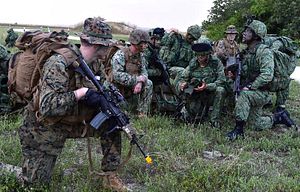Over the past few weeks, the United States and Singapore concluded the latest iteration of one of their annual exercises. The interaction once again put the spotlight on the ongoing efforts by the two strategic partners to boost their defense cooperation amid shared challenges.
As I have written before, the United States and Singapore have long viewed each other as important strategic partners, and that extends to the defense dimension as well. The United States is a key supplier of defense technology and facilities for military training for Singapore, while the city-state is a key regional partner across a range of issues, from counterterrorism to maritime security, while also hosting a U.S. Navy logistics command unit that coordinates regional operations (“Strengthening the U.S.-Singapore Strategic Partnership”).
Both sides also continue to interact regularly through a string of exchanges, visits, and training. One of the manifestations of the bilateral defense relationship in this respect is Exercise Valiant Mark. Launched in 1992, the annual exercise, conducted by the U.S. Marine Corps (USMC) and the Singapore Armed Forces, is designed to enhance interoperability and strengthen military-to-military relationships between the two sides. The last iteration of the exercise in 2017 had seen about 850 personnel engaged among both militaries and culminated in a battalion hell-borne mission, which involved joint planning and an assault by troops.
Over the past few weeks, the defense relationship has been in the headlines again with the holding of the latest iteration of Exercise Valiant Mark. The 27th iteration of the exercise was held from August 25 to September 12 at the Marine Corps Air Ground Combat Center in Twentynine Palms, California, and it featured several components including a battalion assault mission that involved joint planning and air-land integrated live-firing by militaries on both sides.
According to Singapore’s defense ministry (MINDEF), more than 1,000 personnel participated in the exercise, which included the 7th Singapore Infantry Brigade (SIB), the 7th Marine Regiment, supporting components from the Republic of Singapore Air Force (RSAF)’s Peace Carvin II and Peace Vanguard Detachments, and USMC Aviation. On the Singapore side, this iteration of the exercise also saw the inaugural participation of RSAF AH-64D Apache helicopters, thereby further strengthening the range of training opportunities available for the SAF and the USMC.

































